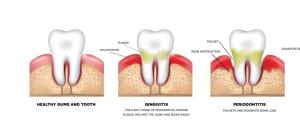I hope everyone in Team 5 is doing well. This week’s assignment has multiple parts. Part one involves learning about three different types of definitions in technical writing. Please review the brief definition for each below.
Parenthetical definition
- An informal definition/ brief explanation written within the sentence with parenthesis. Example, 70-80% of RDH (Registered Dental Hygienist) work in private dental practices.
Sentence definition
- A formal definition with a more detailed explanation of the subject compared to a parenthetical definition. Example, A knife is a tool used to cut things.
Expanded definition
- The most formal type of definition with detailed explanation. It is intended to allow for complete understanding of the subject. Example, A knife is a tool made of steel. It is used for cutting wide variety of things like vegetables, fruits, boxes, people, animals among others.
After getting a good understanding of these definitions, we are to apply these definitions to a word unique to our profession. I have chosen the word “gingivitis”. This word is relatively complex for a layperson to understand, and I spend a significant amount of time explaining this word to my patients.
Word: Gingivitis
Scenario: Ms. Jones has presented for her 6-month dental hygiene appointment with the dental hygienist. After completing the gingival assessment for Mrs. Jones, the dental hygiene diagnosis is determined to be gingivitis. As the primary oral health care provider, the dental hygienist will now explain to Ms. Jones what gingivitis is and how to treat it.
Definitions:
Parenthetical definition: gingivitis (bleeding gums)
Sentence definition: gingivitis is inflammation of the gums.
Expanded definition: The word Gingivitis originates from the Latin word gingivae ‘the gums” + -itis “inflammation” (Harper 2022). Gingivitis is inflammation of the gums caused by bacterial buildup on the tooth surface. The gums appear red, swollen, bleed easily and can sometimes hurt to touch. It is not the same as periodontitis which involves irreversible bone loss (Chapple et al. 2018). Inadequate toothbrushing and flossing causes bacterial buildup and leads to inflammation (Intan et al. 2020). Gingivitis in healthy individuals can be reversed with 3- month scaling with a dental hygienist and improved at home oral hygiene routine (Chapple et al. 2018)
.
Figure 1. Bleeding gums treatment
References:
- Chapple, ILC,Mealey, BL, et al. Periodontal health and gingival diseases and conditions on an intact and a reduced periodontium: Consensus report of workgroup 1 of the 2017 World Workshop on the Classification of Periodontal and Peri-Implant Diseases and Conditions. J Periodontol. 2018; 89( Suppl 1): S74– S84. https://doi.org/10.1002/JPER.17-0719
- Intan Suhana, M. A., Farha, A., & Hassan, B. M. (2020). Inflammation of the Gums. Malaysian family physician : the official journal of the Academy of Family Physicians of Malaysia, 15(1), 71–73.
- Harper, Douglas (2022, Jan 30). Etymology. https://www.etymonline.com/word/gingivitis
- Hillyard, G. A. and Monroe Hillyard, A. ( 2022, Jan 30). Bleeding gums treatment. Gregory A Hillyard, DMD. https://www.drgregoryhillyard.com/dental-concerns/bleeding-gums-treatment/
Leave a Reply